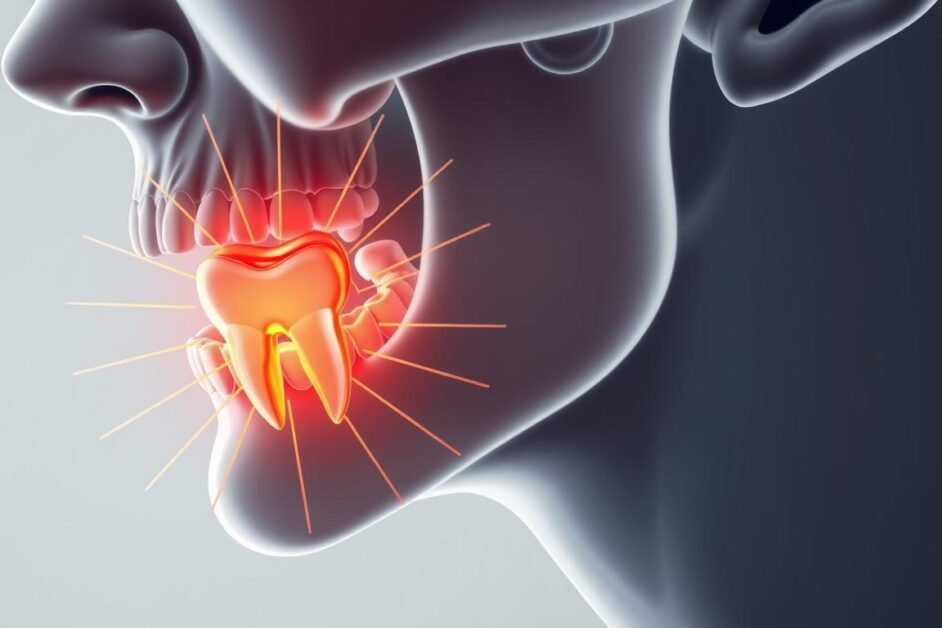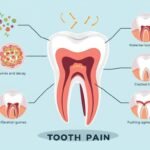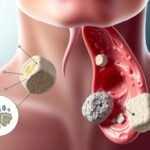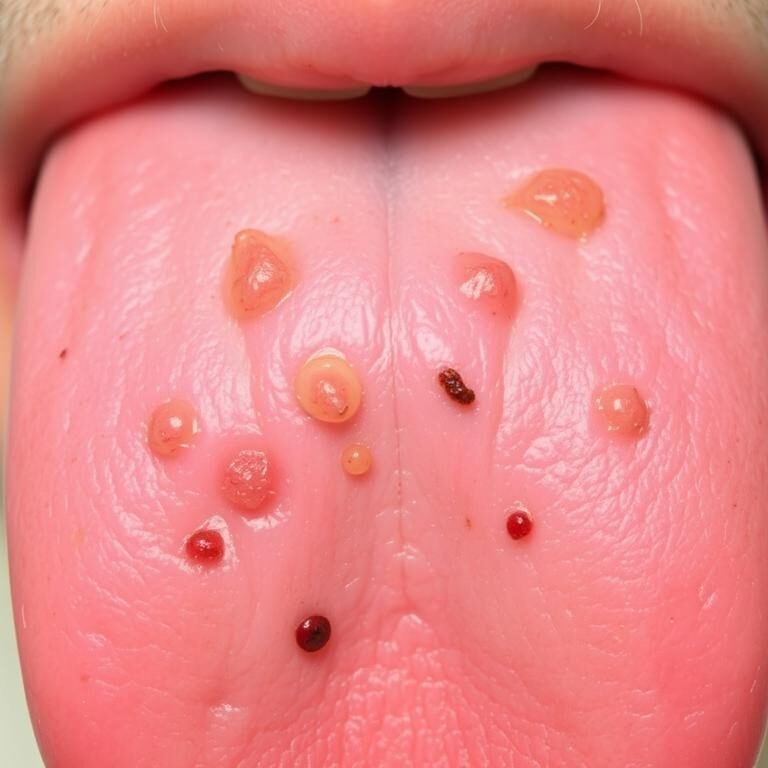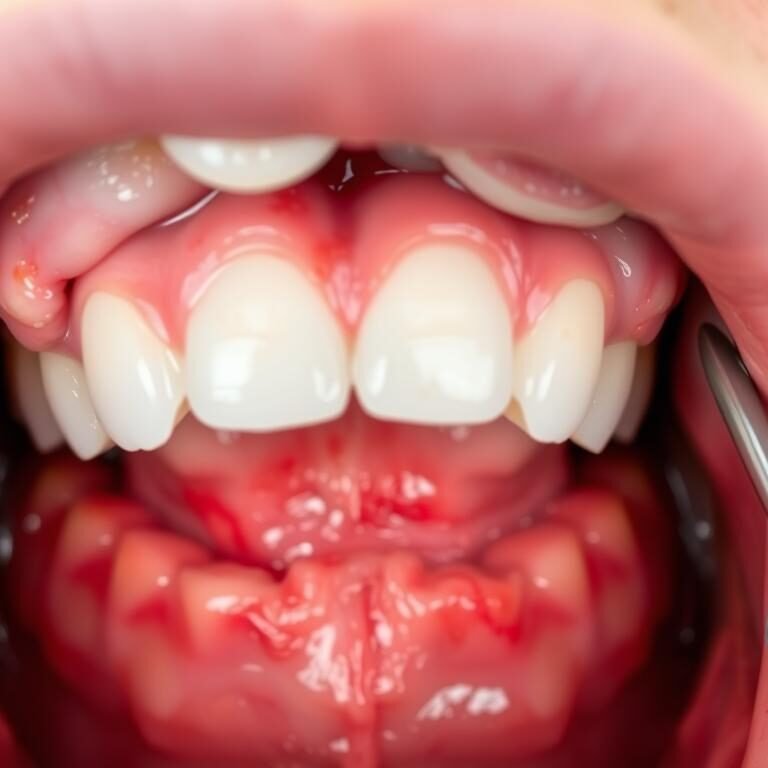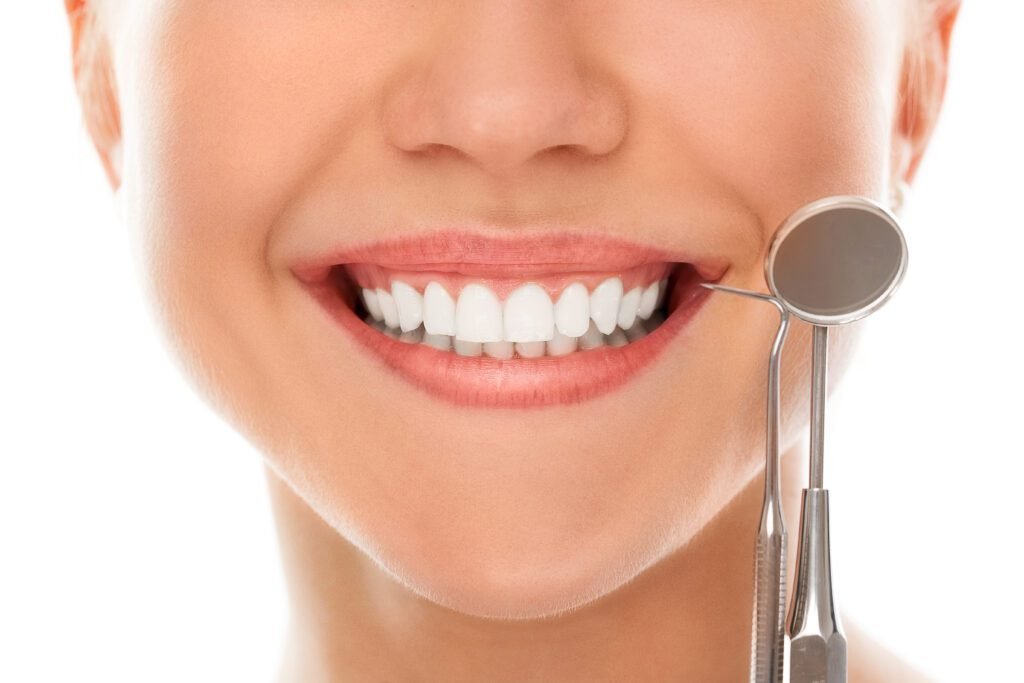Many of us have felt sudden pain in our mouths, ruining a good moment. A simple bite or sip can turn into a sharp reminder of dental issues. Toothache symptoms are a warning that we need to check our dental health.
Imagine brushing your teeth and feeling a sharp sting. You might wonder if you need to see a dentist right away. Tooth decay is the main cause of toothaches, affecting almost all adults at some point. Knowing the signs of a toothache can help you get the treatment you need quickly.
If your mouth is trying to tell you something, listen. It might be warning you about cavities or when you need professional help. For more on dental health, check out this guide on tooth extractions and their reasons.
Table of Contents
Understanding Toothache: What You Need to Know
Tooth pain, or toothache, happens when nerves in or around a tooth get inflamed or irritated. Many things can cause toothaches, like infections, decay, injuries, or losing a tooth. Knowing about tooth pain is key to taking care of your dental health.
Toothache symptoms can be sharp, throbbing, or constant. Sometimes, pain only happens when you press on the tooth. This could mean a cracked tooth or a damaged filling. Pain from gum disease, too much grinding, or food stuck between teeth is common too.
Good dental health and preventive care are very important. Many toothaches can be prevented with regular brushing and flossing. Going to the dentist every six months can help avoid severe pain. If tooth pain lasts more than two days, you should see a dentist to prevent worse problems.
In short, knowing about toothaches helps us take better care of our teeth. We shouldn’t feel pain when we laugh, chew, or speak. So, it’s important to deal with tooth pain right away.
Common Causes of Tooth Pain
Tooth pain can come from many sources, making it key to know the toothache causes. Tooth decay is a big problem, affecting people of all ages. It’s estimated that about 2.4 billion people worldwide have untreated tooth decay.
Also, gum disease is common, affecting about 50% of adults over 30. As we get older, our teeth can get injured or broken, affecting 25% of people. If not treated, small dental injuries can become big pain problems.
Tooth decay and cavities are big health issues, hitting young kids, teens, and older adults hard. Kids who drink too much sugary liquid can get “baby bottle tooth decay.” This shows how diet affects our teeth.
About 30% of people feel tooth pain when eating hot or cold foods. Also, about 10-15% of adults have bruxism, which can make teeth more sensitive and painful. These dental issues need attention, as untreated cavities can cause severe pain and abscesses.
Going to the dentist regularly and practicing good oral hygiene can prevent these problems. If you’re feeling tooth pain, see a dentist. Knowing the signs can help you keep your teeth healthy. For more tips on keeping teeth strong as you age, check out these strategies here.
Toothache Symptoms: Recognizing the Signs
Toothache symptoms can vary a lot. They can be sharp pain or dull pain. Knowing the difference is key to figuring out what’s wrong.
Sharp pain usually means a serious problem. It’s like a warning sign. Dull pain might not be as urgent but is also a sign of trouble.
Understanding these pain types helps people know when to see a dentist.
Sharp Pain vs. Dull Pain
Sharp pain is like a warning. It could mean cavities, fractures, or an abscess. This pain is sudden and gets worse with pressure.
Dull pain is more constant. It’s often from gum disease or long-standing tooth problems. Knowing the difference helps with toothache symptoms.
Localized Pain in the Jaw or Ear
Pain in the jaw or ear can make toothache symptoms harder to understand. This pain might come from dental problems, even if it feels like it’s coming from somewhere else.
For example, tooth problems can cause pain in the jaw or ear. This kind of pain could mean an infection or a more serious dental issue. It’s important to see a dentist right away.
The Role of Tooth Decay in Tooth Pain
Tooth decay is a main cause of dental pain. It starts with small cavities that can grow if not treated. Finding cavities early is key to keeping teeth healthy and avoiding pain.
How Cavities Develop
Bacteria in the mouth make acid from sugars, wearing down the enamel. This exposes the dentin, making teeth sensitive and painful. Using fluoride toothpaste and flossing can stop cavities and tooth decay.
Impact of Untreated Tooth Decay
Not treating tooth decay can cause big problems. About 90% of adults get tooth decay, needing fillings or even tooth removal. Untreated decay can also cause pulpitis, a painful condition.
Going to the dentist regularly can cut down the risk of these problems by half. This makes dental care important for keeping teeth healthy.
Untreated tooth decay can lead to more than just pain. It can cause dental abscesses and tooth loss, affecting nearly 25% of adults aged 20-64. Early treatment and good dental care can prevent cavities and tooth pain.
| Statistic | Percentage |
|---|---|
| Adults with untreated tooth decay | 40% |
| Children aged 5-9 with at least one cavity | 50% |
| Adults showing signs of gum disease | 47% |
| Adults requiring a dental crown by age 65 | 29% |
| Annual root canal procedures performed in the U.S. | 15 million |
For more on tooth decay and why treatments are needed, check out this article.
Identifying a Tooth Abscess
A tooth abscess is a pocket of pus caused by bacteria. It’s important to catch it early to avoid serious problems. Signs include a severe toothache, fever, and swelling in the face. Knowing the difference between an abscess and a cavity is key to proper treatment.
Signs of an Abscessed Tooth
Signs of a tooth abscess can vary. But, look out for:
- Severe, continuous toothache
- Swelling in the gums near the infected tooth
- A bitter taste or foul odor in the mouth
- Facial swelling or swelling of the jaw
- Pain during chewing
- Sensitivity to hot or cold
- Fever and swollen glands in the neck
Spotting tooth abscess symptoms early is critical. It helps prevent the infection from spreading. Untreated, it can lead to serious health issues, even life-threatening ones.
Difference Between Abscess and Cavity Pain
Knowing the difference between abscess and cavity pain is important. An abscess causes intense, throbbing pain. It affects the whole area. Cavity pain is usually from decay and can change in intensity.
Getting treatment quickly can save your tooth and prevent bigger health problems. Dentists will check the pain and decide on treatment. This might include draining the abscess or antibiotics.
| Symptom | Abscess | Cavity |
|---|---|---|
| Severity of Pain | Severe, constant | Varies, intermittent |
| Swelling | Common, around the gum | Rare |
| Foul Odor/Taste | Common | Uncommon |
| Fever | Can occur | Not typical |
| Treatment | Draining, antibiotics | Fillings, crowns |
The Connection Between Sinus Infections and Toothache
It’s important to know how sinus infections and toothaches are connected. Sinusitis affects about 28.9 million Americans yearly. Many of these cases cause tooth pain, mainly in the upper teeth. This pain comes from sinus inflammation putting pressure on the upper jaw.
Tooth pain often hits the upper molars, which are near the sinuses. This pain can spread to the lower teeth, making it hard to find the cause. Symptoms like facial pressure, congestion, cough, or fever can also occur. Sometimes, dental infections can lead to sinusitis.
There are three types of sinus infections: acute, subacute, and chronic. Symptoms include:
- Head congestion
- Runny or stuffy nose
- Cough
- Toothache
- Facial pain
Untreated sinus infections can cause serious problems. These include chronic sinusitis, abscesses, or even brain issues. Dental pain from sinusitis is often widespread, unlike regular dental pain. This means pain can get worse with physical activity.
Knowing about these connections helps manage symptoms better. If tooth pain lasts after sinus symptoms go away, more tests might be needed. Finding the pain’s source is key to treating it effectively.
Understanding Referred Pain: When Jaw Pain Means Tooth Pain
Referred pain is when you feel pain in one area but it comes from another. Jaw pain and toothaches can be confusing. It’s important to know if jaw pain is from a dental problem or something else.
Potential Causes of Referred Pain
Many things can cause jaw pain that feels like tooth pain. Knowing what these are helps you take care of your teeth better.
- Temporomandibular Joint (TMJ) Disorders: About 30% of adults have TMJ issues, leading to jaw pain that feels like tooth pain.
- Sinus Infections: Sinus problems can cause tooth sensitivity or pain, making it seem like you have a toothache.
- Headaches: Headaches, like tension or migraines, can hurt your jaw and feel like tooth pain.
- Dental Abscess: A tooth abscess can cause pain that spreads to the jaw. This is a serious problem that needs quick attention.
Knowing about referred pain and dental issues helps you get the right treatment. This ensures your teeth stay healthy.
Symptoms of a Tooth Infection
Knowing the signs of a tooth infection is key for quick dental care. Common symptoms include severe pain, swelling, and fever. These signs mean you need to see a dentist fast to avoid bigger problems.
When to Seek Immediate Care
Acting quickly can stop serious dental issues. Go to the emergency room if you have:
- Severe, relentless tooth pain
- Swelling of the face or gums
- Fever above 100.4°F (38°C)
- Difficulty swallowing or breathing
- Pus or drainage in the mouth
These signs might mean you have a dental emergency that needs quick help.
Link Between Fever and Tooth Infections
Fever is often linked to tooth infections. It happens when your body tries to fight off the infection. About 10-15% of dental abscess cases have fever along with other symptoms.
Watching your body temperature can show how serious the infection is. If you have a fever and toothache, you should see a dentist right away. This can help prevent bigger problems.
Gum Disease and Its Impact on Tooth Sensitivity
Gum disease is a big factor in tooth sensitivity. As it gets worse, inflammation and gum recession can expose tooth roots. This makes teeth more sensitive. Knowing the signs of gum disease is key to keeping teeth healthy and avoiding sensitivity.
Red Flags for Gum Disease
Spotting gum disease early is important. It helps you get treatment fast and avoid bigger problems. Look out for these signs:
- Red, swollen gums
- Gums that bleed easily during brushing or flossing
- Persistent bad breath or taste in the mouth
- Loose teeth or changes in bite
Going to the dentist regularly can really help your teeth. Don’t ignore tooth sensitivity, as it might mean there’s a bigger issue. Keeping your teeth clean and getting professional cleanings can help prevent gum disease.
| Gum Disease Symptoms | Potential Impact on Dental Health |
|---|---|
| Swollen Gums | May indicate gingivitis, increase tooth sensitivity |
| Bleeding Gums | Sign of inflammation, possible periodontitis |
| Loose Teeth | Could lead to tooth loss if not treated |
| Persistent Bad Breath | Caused by bacteria from gum disease |
Ignoring these signs can make tooth sensitivity worse and lead to more problems. Taking care of your teeth is important. It helps avoid the bad effects of gum disease and keeps your teeth healthy for a long time.
Exploring Wisdom Teeth and Their Symptoms
Wisdom teeth usually come in between 17 and 26 years old. They can cause dental issues as they grow. Most people have four wisdom teeth, two on top and two on the bottom.
When wisdom teeth don’t come in right, they can get stuck. This can lead to big problems.
People with stuck wisdom teeth often feel wisdom teeth pain. More than 60% of those with stuck teeth have pain, swelling, or infections. These issues can make toothache worse, affecting over 50% of those with infected wisdom teeth.
Ignoring these symptoms can lead to serious problems. Infections from wisdom teeth can even cause sepsis if not treated. It’s important to see a dentist right away if symptoms last more than 48 hours.
Complications from wisdom teeth are common, affecting about 70% of people. Up to 85% of adults will need to have at least one wisdom tooth removed. Regular dental visits can help catch problems early, which happens in about 70% of cases.
Toothache symptoms from wisdom teeth include pain, gum inflammation, and trouble cleaning the back teeth. These issues can lead to more dental problems, like cavities in nearby teeth. Impacted wisdom teeth can increase cavity risk by up to 25% because of cleaning challenges.
Pericoronitis is an inflammatory gum condition linked to partially erupted wisdom teeth. It affects about 10-15% of those with them. Cysts can also form in 2-5% of wisdom teeth cases, harming nearby teeth and gums.
In summary, knowing about wisdom teeth is key to good oral health. For more on symptoms and how to handle them, check out this guide.
How Grinding Teeth Can Contribute to Toothache
Teeth grinding, or bruxism, affects many people. It’s a common issue that can lead to tooth pain and sensitivity. About 70% of those who grind their teeth experience toothaches.
Bruxism can damage teeth. Around 15% of grinders have teeth that are flattened, fractured, or chipped. This damage may require expensive dental work. Grinding also causes jaw pain in about 70% of people.
Stress and anxiety often cause bruxism. It’s linked to mental health in 10-25% of cases. Behavioral therapy can help, improving symptoms for 30-50% of patients. Many people don’t realize they grind their teeth until they face dental problems.
There are ways to manage bruxism. Dental appliances like mouthguards can help. They reduce grinding by 20-30%, lowering the risk of tooth pain. About 10% of adults grind their teeth, so it’s important to be aware and take action.
| Bruxism Impact | Percentage |
|---|---|
| Individuals who grind teeth | 33% |
| Suffer from tooth pain | 70% |
| Experience noticeable tooth damage | 15% |
| Benefit from dental appliances | 20-30% |
| Show TMJ symptoms | 50% |
| Awareness after complications | 45% |
Recognizing the Symptoms After Dental Work
After dental work, like fillings or crowns, people might feel different. It’s important to know what’s normal and when to see a dentist. Sometimes, what feels like a big problem is just a normal reaction to the treatment.
Common Reactions to Fillings and Crowns
Here are some symptoms you might see:
- Sensitivity to Temperature: You might feel more sensitive to hot or cold for days or weeks after dental work.
- Minor Discomfort: You might feel a dull ache or pressure at the treated area. This usually goes away in a few days.
- Gum Irritation: Swelling and tenderness in the gums can happen, more so if you had local anesthetics.
- Changes in Bite: You might notice your bite feels off after getting crowns or fillings. This might need adjusting.
- Toothache: Temporary tooth pain can happen, but it usually goes away as your mouth gets used to the changes.
Knowing these common dental work symptoms helps you figure out if you need more dental care. If your symptoms get worse or you have severe pain, swelling, or fever, see a dentist right away. This can help avoid bigger problems.
Nerve Damage as a Cause of Tooth Pain
Nerve damage tooth pain is common and can come from many sources. These include trauma, dental decay, or untreated infections. When nerves in the tooth or around it get irritated, it can cause lasting pain.
About 80% of adults will get tooth decay by age 34. This can lead to nerve damage if not treated. Pulpitis, or inflammation of the tooth’s inner pulp, affects up to 70% of those with tooth pain in dental clinics.
- Untreated cavities, leading to severe decay
- Infection resulting in dental abscesses
- Trauma from physical injuries
- Excessive teeth grinding, known as bruxism
Tooth sensitivity can be a sign of nerve damage. Sharp pain from hot or cold foods means the nerves are exposed. About 30-40% of adults have sensitivity due to damaged fillings.
Understanding the cause of nerve damage tooth pain is key. Toothaches affect 15% to 30% of adults. This leads to about 15 million root canal therapies each year in the U.S. Early dental care can prevent nerve damage and manage pain.
Natural Remedies for Toothache Relief
Tooth pain can be really upsetting and disrupt your day. Many people look for natural remedies to get quick relief. These home treatments can help ease the pain until you can see a dentist.
Home Treatments That Provide Temporary Relief
There are many home treatments that can help with toothache pain:
- Saltwater Rinse: Mix 1/2 teaspoon of salt in warm water. Gargling with this can reduce swelling and kill germs.
- Hydrogen Peroxide Rinse: A mix of 3-percent hydrogen peroxide and water is a good antibacterial mouthwash.
- Clove Oil: Clove oil is known to help with toothaches. Dilute it with a carrier oil at a 15 drops to one ounce ratio before using.
- Coconut Oil: Oil pulling with coconut oil twice a day for a week can improve your mouth health.
- Turmeric Paste: Turmeric might help with pain relief. Applying a paste could offer some comfort.
- Apple Cider Vinegar: It’s not proven, but its antibacterial properties might help with oral care.
The toothache plant has spilanthol, which is anti-inflammatory. Using these home treatments regularly can give you quick relief. But, always see a dentist for ongoing pain.
Some people find toothache relief in just five minutes with these methods. Yet, over 60% of those treating themselves will see a dentist within 48 hours. It’s important to get help right away, if you have fever or pain that lasts.
| Natural Remedy | Preparation | Benefits |
|---|---|---|
| Saltwater Rinse | 1/2 teaspoon salt in 8 oz warm water | Reduces inflammation, kills bacteria |
| Hydrogen Peroxide Rinse | 3% hydrogen peroxide mixed with equal parts water | Acts as an antibacterial mouthwash |
| Clove Oil | 15 drops clove oil to 1 oz carrier oil | Provides analgesic properties |
| Coconut Oil | Used for oil pulling twice daily | Can reduce plaque and enhance oral health |
| Turmeric Paste | Mix turmeric with water to form a paste | May offer soothing effects on pain |
| Apple Cider Vinegar | No specific preparation | May help with oral hygiene |
Going to the dentist regularly is key to avoiding toothaches and keeping your mouth healthy. You should visit every six months. Using these natural remedies can help with tooth pain relief while you wait for professional care.
Over-the-Counter Pain Relief for Toothaches
Managing tooth pain is key, even when dental issues pop up unexpectedly. Acetaminophen and ibuprofen are top picks for toothache relief. They offer quick relief while you wait for a dentist.
The success of these pain relievers depends on the medication’s strength and your health. For example, 63% of people use them for tooth pain. But, seeing a dentist is vital if the pain doesn’t go away or gets worse.
Along with pain meds, using ice packs and warm saltwater rinses can help. Ice packs reduce swelling and ease symptoms. These steps support your body’s healing process.
It’s important to use tooth pain medication as directed. Following the package instructions helps avoid side effects. But, using too much can cause problems, so getting professional advice is wise.
Home remedies like hydrogen peroxide and clove oil are also used. Yet, about 45% of people try these before seeing a dentist. Relying only on these might delay getting the care you need.
In conclusion, over-the-counter pain relief is a big help for tooth pain. Using meds wisely and visiting the dentist on time keeps your mouth healthy. For more info, check out this resource on pain management and dental care.
| Medication | Active Ingredient | Typical Use | Recommended Dosage |
|---|---|---|---|
| Advil | Ibuprofen | Toothache Pain Relief | 200-400 mg every 4-6 hours |
| Tylenol | Acetaminophen | General Pain Relief | 500-1000 mg every 6-8 hours |
| Oragel | Benzocaine | Topical Pain Relief | Apply as needed, not exceeding 4 times daily |
The Importance of Timely Dental Care and Regular Checkups
Regular dental checkups are key to keeping your teeth and mouth healthy. They help catch problems early, like cavities and gum disease. This way, you can avoid more serious issues later on.
Ignoring dental problems can lead to expensive treatments. A small cavity is much cheaper to fix than a big one. Plus, most oral diseases can be prevented with good hygiene and dentist visits.
Good oral health also means a healthier body. It can lower your risk of heart disease and diabetes. People with dental problems are more likely to face these issues. So, regular dental visits are good for your smile and your health.
FAQ
What are the symptoms of a tooth abscess?
A tooth abscess can cause severe pain and swelling in the gums. You might also have a fever and a bad taste in your mouth. Swollen lymph nodes in the neck are another sign.
Can a cavity cause pain in the jaw or ear?
Yes, a cavity can cause pain in the jaw or ear. This happens when the infection irritates nerves nearby, leading to discomfort.
How long does a tooth abscess last with antibiotics?
Antibiotics can start to help within 24 to 48 hours. But, it may take longer for the infection to fully heal, depending on its severity.
Can a toothache cause chest pain?
Yes, a toothache can sometimes cause chest pain. This is because nerves in the upper body can send pain signals to the chest. Always check with a healthcare provider if you have chest pain.
What are the treatments for a tooth infection?
Treatments include antibiotics to fight the infection and pain relief. You might also need dental procedures like root canals or extractions, depending on the case.
Is toothache the worst pain?
Many people say toothache is one of the worst pains. This is because of the constant pressure and throbbing from dental nerve inflammation.
Can an ear infection cause jaw pain?
Yes, an ear infection can cause jaw pain. This is because both areas share nerve pathways. When the ear is inflamed, you might feel discomfort in your jaw.
What does a dead tooth smell like?
A dead tooth can smell foul or unpleasant. This is because of tissue breakdown and possible bacterial infection.
How can I tell if I have a mild tooth infection?
Signs of a mild tooth infection include localized pain and sensitivity to hot or cold. You might also notice slight swelling in the gums and occasional discomfort when biting.
What are some natural remedies for toothache relief?
Natural remedies include saltwater rinses, clove oil application, cold compresses, and herbal teas. But, these should not replace professional dental care.
What are the red flags for gum disease?
Red flags for gum disease include swollen, tender gums and persistent bad breath. You might also notice bleeding while brushing or flossing and receding gum lines.
Can tooth decay lead to sinus infections?
Yes, untreated tooth decay can lead to infections that may spread to the sinuses. This can cause sinusitis symptoms.

